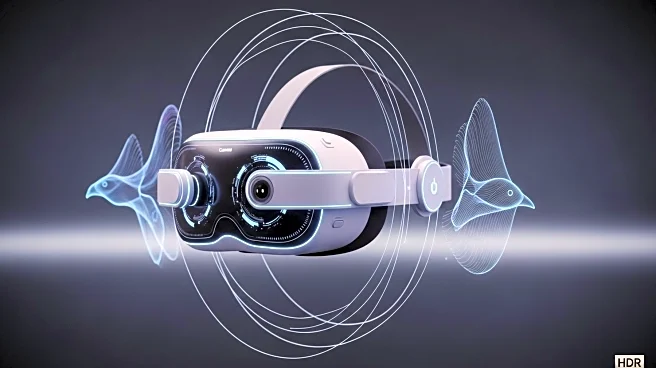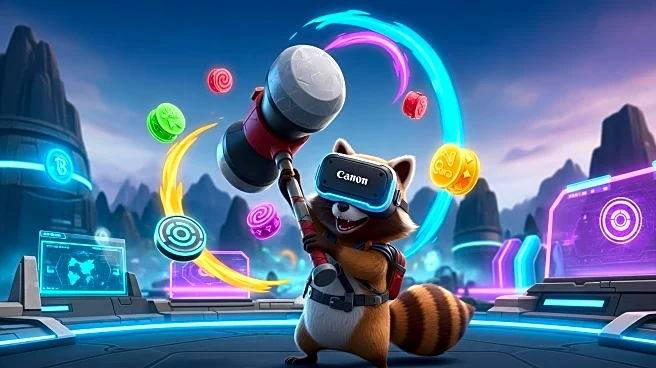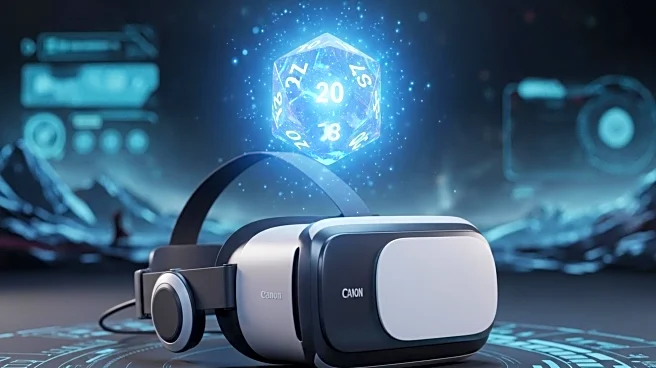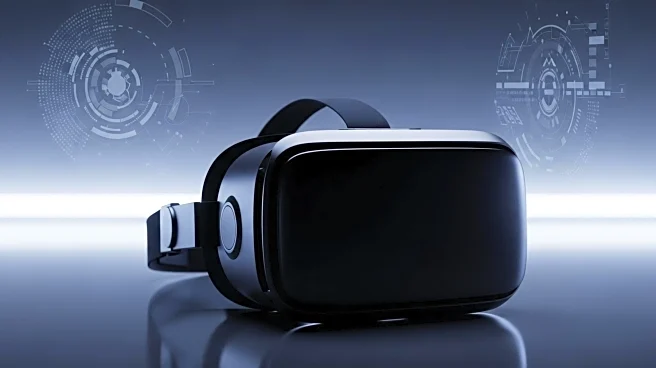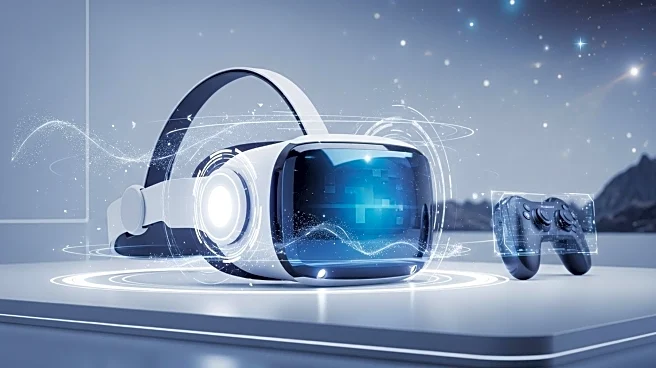What's Happening?
VRChat creators are innovating with avatar designs by integrating Quest Pro eye tracking technology to simulate bird-like movements. Creator Purpzie has developed a gryphon avatar whose head movements are controlled by human eye movements detected by the Quest Pro. This project was inspired by an owl design by groxxy and builds upon a gryphon model by manyblinkinglights. Purpzie's work allows users to experience the sensation of becoming a creature, fulfilling childhood fantasies of flying like dragons or gryphons. The avatar's movements are enhanced by animation and inverse kinematics systems, allowing users to control various parts of the avatar, such as wings and facial expressions, through gestures.
Why It's Important?
This development in VRChat highlights the growing capabilities of virtual reality technology in creating immersive experiences. By allowing users to embody fantastical creatures, VRChat is expanding the boundaries of personal expression and creativity in virtual spaces. The integration of eye tracking technology enhances the realism and interactivity of avatars, potentially influencing future VR applications in gaming and social interactions. This innovation could lead to increased user engagement and attract more creators to explore VR as a medium for artistic and experiential expression.
What's Next?
As VR technology continues to evolve, creators like Purpzie may further refine avatar designs and explore new ways to enhance user experiences. The success of such projects could encourage VRChat and other platforms to invest in more advanced tracking technologies and support for creative endeavors. Additionally, the community-driven nature of VRChat may lead to collaborations and shared knowledge among creators, fostering a vibrant ecosystem of innovation in virtual reality.
Beyond the Headlines
The use of VR to overcome personal challenges, such as social anxiety, as experienced by Purpzie, underscores the potential of virtual environments to positively impact mental health and social skills. This aspect of VR technology could be explored further in therapeutic settings, offering new avenues for treatment and personal development.

